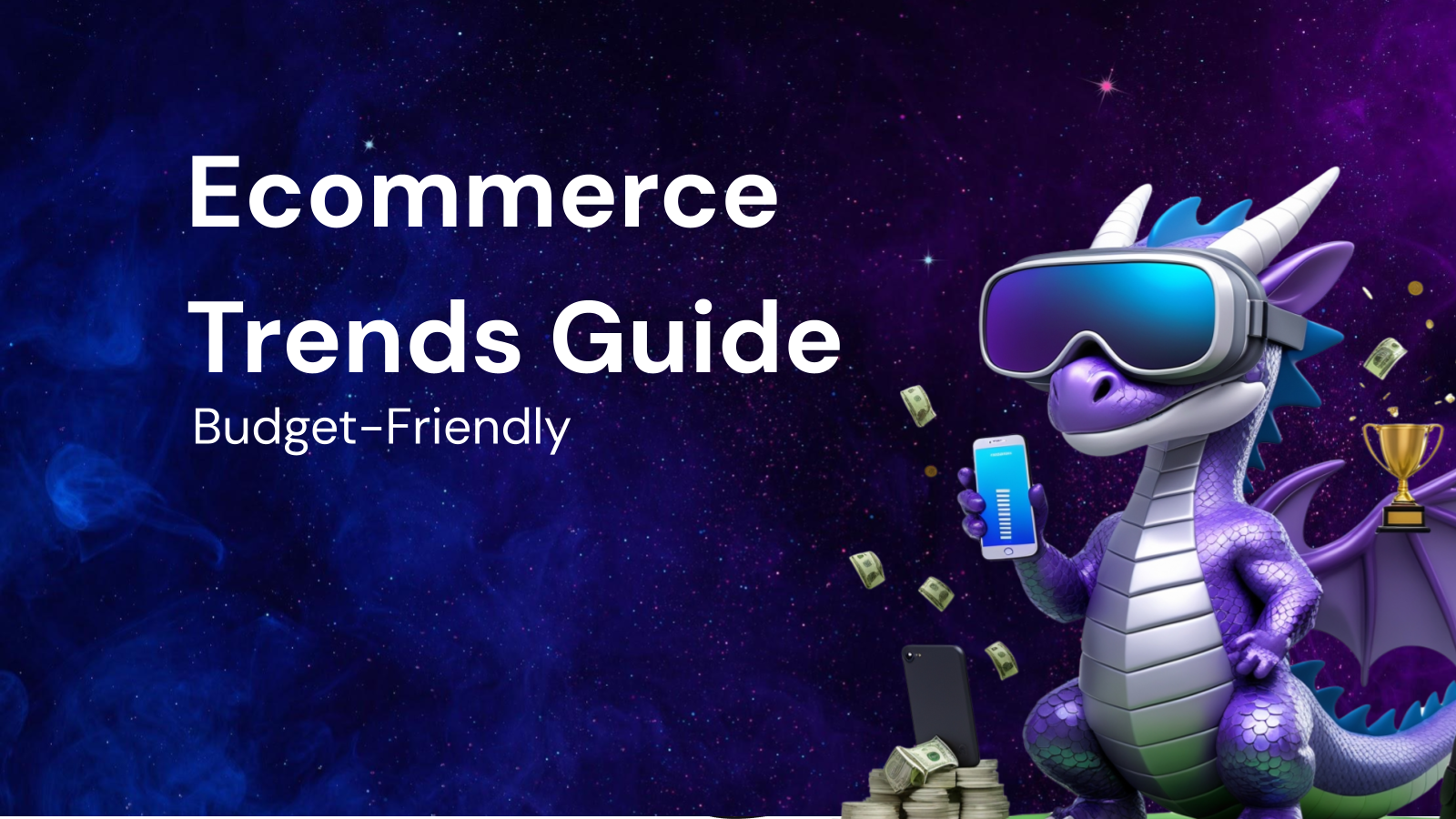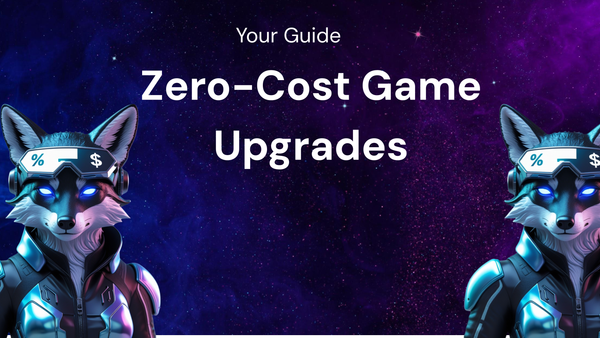Ecommerce Trends Comparison: Your Budget-Friendly Guide

Ecommerce Trends Comparison: Your Budget-Friendly Guide
The world of ecommerce is a constantly evolving landscape. New technologies, shifting consumer behaviors, and innovative marketing strategies emerge at a rapid pace. For businesses, particularly those operating on a tight budget, keeping up with these trends can feel like an overwhelming and expensive endeavor. However, understanding and strategically implementing relevant ecommerce trends is crucial for survival and growth in today's competitive market.
This comprehensive guide delves into the key ecommerce trends shaping the industry, focusing on actionable insights and budget-friendly strategies to help businesses of all sizes leverage these advancements without breaking the bank. We’ll explore various trends, compare their effectiveness, and provide practical tips for implementation, allowing you to prioritize and invest wisely in the areas that align best with your business goals and budget constraints.
I. Personalization: Tailoring the Experience Without the Tailor's Bill
The Trend: Personalization is no longer a luxury; it's an expectation. Consumers crave tailored experiences that cater to their individual needs, preferences, and browsing behavior. This includes personalized product recommendations, targeted marketing messages, and customized website content.
Budget-Friendly Strategies:
- Segmentation: Instead of broad marketing campaigns, segment your audience based on demographics, purchase history, browsing behavior, and interests. Use your email marketing platform or CRM to create targeted lists and send personalized messages.
- Example: Segment customers who purchased running shoes and send them targeted emails about running apparel, training tips, or upcoming races.
- Product Recommendations: Leverage the power of product recommendations engines, many of which offer free or low-cost options. These engines analyze customer data to suggest relevant products based on their past purchases or browsing history.
- Tools: Nosto (free trial available), Recommender, LimeSpot.
- On-Site Personalization: Simple techniques like displaying a welcome message with the customer's name or showing recently viewed products can significantly enhance the user experience. Most ecommerce platforms offer built-in features for this.
- Personalized Email Marketing: Use dynamic content in your email campaigns to display personalized product recommendations, special offers, or relevant articles based on customer data.
- Example: Use a customer's name in the subject line and body of the email.
- Customer Surveys and Feedback: Regularly collect customer feedback through surveys, polls, and reviews. Use this information to understand their needs and preferences and personalize their future interactions. Google Forms or SurveyMonkey offer free or low-cost options.
Effectiveness Comparison:
| Strategy | Cost | Complexity | Impact | Scalability | | ---------------------- | ---------- | ---------- | ------------------------------------------- | ----------- | | Segmentation | Low | Medium | High (Improved ROI, customer engagement) | High | | Product Recommendations | Low-Medium | Medium | High (Increased sales, AOV) | High | | On-Site Personalization | Low | Low | Medium (Improved UX, brand perception) | High | | Email Personalization | Low | Medium | High (Improved open rates, click-throughs) | High | | Customer Surveys | Low | Low | Medium (Valuable insights, improved CX) | Medium |
Prioritization: Start with segmentation and email personalization, as they offer a high impact for a relatively low cost and complexity. Gradually implement product recommendations and on-site personalization as your budget allows.
II. Mobile Commerce: Optimizing for the On-the-Go Shopper
The Trend: Mobile commerce is no longer a trend; it's a necessity. A significant portion of online traffic and purchases now originates from mobile devices. Optimizing your website and marketing efforts for mobile users is crucial for reaching a wider audience and driving conversions.
Budget-Friendly Strategies:
- Responsive Website Design: Ensure your website is responsive, meaning it adapts seamlessly to different screen sizes and devices. Most modern ecommerce platforms offer responsive templates by default.
- Test: Use Google's Mobile-Friendly Test to check your website's responsiveness.
- Mobile-First Indexing: Google prioritizes mobile-friendly websites in its search rankings. Optimize your website's mobile version for SEO, including page speed, content, and user experience.
- Simplified Checkout Process: Streamline your checkout process for mobile users by minimizing the number of steps required to complete a purchase. Offer guest checkout options and integrate with mobile payment methods like Apple Pay and Google Pay.
- Mobile-Optimized Email Marketing: Ensure your email templates are responsive and display correctly on mobile devices. Use concise subject lines and compelling visuals.
- SMS Marketing: Explore SMS marketing as a way to reach mobile users with personalized offers and promotions. Several platforms offer affordable SMS marketing solutions.
- Tools: Twilio, SimpleTexting, Attentive (offer free trials).
Effectiveness Comparison:
| Strategy | Cost | Complexity | Impact | Scalability | | ----------------------- | ---- | ---------- | ------------------------------------ | ----------- | | Responsive Website | Low | Low | High (Improved UX, SEO) | High | | Mobile-First Indexing | Low | Medium | High (Improved SEO ranking) | High | | Simplified Checkout | Low | Medium | High (Increased conversions) | High | | Mobile-Optimized Email | Low | Low | Medium (Improved engagement) | High | | SMS Marketing | Low | Medium | Medium (Direct reach, immediate impact) | Medium |
Prioritization: A responsive website design is the foundation of any mobile commerce strategy. Focus on optimizing your checkout process and email marketing for mobile devices next. SMS marketing can be a valuable addition, but consider it after you've established a solid foundation in other areas.
III. Social Commerce: Selling Where Your Customers Socialize
The Trend: Social commerce involves selling products directly through social media platforms like Facebook, Instagram, and Pinterest. It allows businesses to reach a wider audience, engage with customers in real-time, and streamline the purchasing process.
Budget-Friendly Strategies:
- Setting Up Shop on Social Platforms: Most major social media platforms offer built-in shopping features that allow you to create a virtual storefront and sell products directly to your followers.
- Platforms: Facebook Shops, Instagram Shopping, Pinterest Product Pins.
- Influencer Marketing (Micro-Influencers): Partner with micro-influencers in your niche to promote your products to their followers. Micro-influencers typically have smaller but more engaged audiences and are often more affordable than celebrity influencers.
- Platforms: AspireIQ, Upfluence, Grin (focus on finding micro-influencers).
- User-Generated Content (UGC): Encourage customers to share photos and videos of themselves using your products on social media. Feature UGC on your website and social media channels to build trust and social proof.
- Social Media Contests and Giveaways: Run contests and giveaways on social media to increase brand awareness, engagement, and follower growth.
- Run Targeted Ads: Utilize social media advertising platforms like Facebook Ads Manager to target specific demographics, interests, and behaviors. Start with small budgets and test different ad creatives and targeting options to optimize your campaigns.
Effectiveness Comparison:
| Strategy | Cost | Complexity | Impact | Scalability | | ----------------------- | ---------- | ---------- | ------------------------------------ | ----------- | | Social Shops | Low | Medium | Medium (Direct sales, brand awareness) | Medium | | Micro-Influencer Marketing | Low-Medium | Medium | Medium (Targeted reach, authenticity) | Medium | | UGC | Low | Low | Medium (Social proof, trust building) | Medium | | Social Contests | Low-Medium | Medium | Medium (Engagement, follower growth) | Medium | | Targeted Social Ads | Low-High | Medium | High (Targeted reach, conversions) | High |
Prioritization: Start by setting up shop on the social media platforms where your target audience spends the most time. Focus on encouraging user-generated content and running social media contests to build engagement and brand awareness. Micro-influencer marketing can be a cost-effective way to reach a targeted audience, but research potential influencers carefully. Targeted social ads offer the potential for high impact, but require careful planning and optimization.
IV. Video Marketing: Engaging Customers Through Visual Storytelling
The Trend: Video marketing is a powerful tool for engaging customers, showcasing products, and building brand awareness. Videos can be used on your website, social media channels, and email marketing campaigns.
Budget-Friendly Strategies:
- DIY Product Videos: Create simple product videos using your smartphone or a basic camera. Focus on showcasing the product's features and benefits in a clear and concise manner.
- User-Generated Video Content: Encourage customers to create and share videos of themselves using your products. Offer incentives like discounts or gift cards to encourage participation.
- Behind-the-Scenes Videos: Give customers a glimpse behind the scenes of your business by creating videos that showcase your team, your production process, or your company culture.
- Animated Explainer Videos: Create short animated videos to explain complex concepts or showcase the benefits of your products or services. Several online tools offer affordable animation services.
- Tools: Vyond, Animaker, Biteable (offer free trials or basic plans).
- Live Video Streaming: Use live video streaming platforms like Facebook Live and Instagram Live to connect with customers in real-time, answer questions, and showcase products.
Effectiveness Comparison:
| Strategy | Cost | Complexity | Impact | Scalability | | ------------------------ | ---------- | ---------- | ------------------------------------ | ----------- | | DIY Product Videos | Low | Low | Medium (Product showcase, information) | Medium | | UGC Videos | Low | Low | Medium (Authenticity, social proof) | Medium | | Behind-the-Scenes Videos | Low | Low | Medium (Brand building, connection) | Medium | | Animated Videos | Low-Medium | Medium | Medium (Explanation, engagement) | Medium | | Live Streaming | Low | Low | Medium (Real-time engagement, Q&A) | Medium |
Prioritization: Start by creating simple DIY product videos and behind-the-scenes videos. Encourage user-generated video content to build authenticity and social proof. Animated explainer videos can be a valuable addition, but consider them after you've established a solid foundation in other areas. Live streaming offers the potential for real-time engagement, but requires careful planning and preparation.
V. AI-Powered Solutions (Accessible and Affordable)
The Trend: Artificial Intelligence (AI) is becoming increasingly accessible to businesses of all sizes. AI-powered solutions can be used to automate tasks, personalize experiences, and improve decision-making.
Budget-Friendly Strategies:
- AI-Powered Chatbots: Implement chatbots on your website to provide instant customer support, answer frequently asked questions, and guide customers through the purchasing process. Many platforms offer free or low-cost chatbot solutions.
- Tools: HubSpot Chatbot Builder (free), Chatfuel (free plan available), ManyChat (free plan available).
- AI-Powered Email Marketing: Utilize AI-powered email marketing platforms to optimize your email campaigns, personalize subject lines, and send emails at the optimal time for each customer.
- Tools: Sendinblue, Mailchimp (offer AI-powered features).
- AI-Powered Product Recommendations: As mentioned earlier, leverage AI-powered product recommendation engines to suggest relevant products to customers based on their browsing history and purchase behavior.
- AI-Powered Customer Service Tools: Use AI-powered customer service tools to analyze customer feedback, identify common issues, and improve your customer service processes.
Effectiveness Comparison:
| Strategy | Cost | Complexity | Impact | Scalability | | ------------------------ | ---------- | ---------- | ------------------------------------ | ----------- | | AI Chatbots | Low-Medium | Medium | High (Improved customer service, lead generation) | High | | AI Email Marketing | Low-Medium | Medium | High (Improved open rates, conversions) | High | | AI Product Recommendations | Low-Medium | Medium | High (Increased sales, AOV) | High | | AI Customer Service Tools | Low-Medium | Medium | High (Improved CX, efficiency) | High |
Prioritization: Start by implementing AI-powered chatbots to improve your customer service and generate leads. Utilize AI-powered email marketing tools to optimize your email campaigns and personalize your messaging. AI-powered product recommendations can be a valuable addition, but consider them after you've established a solid foundation in other areas.
VI. Sustainability and Ethical Practices: Appealing to the Conscious Consumer
The Trend: Consumers are increasingly concerned about the environmental and social impact of their purchases. Businesses that demonstrate a commitment to sustainability and ethical practices are more likely to attract and retain customers.
Budget-Friendly Strategies:
- Eco-Friendly Packaging: Use eco-friendly packaging materials like recycled cardboard, biodegradable packing peanuts, and compostable mailers.
- Sustainable Sourcing: Source products and materials from sustainable and ethical suppliers.
- Transparency: Be transparent about your sustainability efforts and ethical practices. Share information about your sourcing, production, and packaging processes on your website and social media channels.
- Partnerships with Environmental Organizations: Partner with environmental organizations to support their work and demonstrate your commitment to sustainability.
- Donating to Charities: Donate a portion of your profits to charities that align with your values.
Effectiveness Comparison:
| Strategy | Cost | Complexity | Impact | Scalability | | ------------------------ | ---------- | ---------- | ------------------------------------ | ----------- | | Eco-Friendly Packaging | Low-Medium | Low | Medium (Positive brand perception) | Medium | | Sustainable Sourcing | Medium-High | Medium | High (Improved brand reputation) | Medium | | Transparency | Low | Low | Medium (Building trust, loyalty) | High | | Environmental Partnerships | Low-Medium | Low | Medium (Enhanced brand image) | Medium | | Charitable Donations | Low-Medium | Low | Medium (Social good, brand perception) | Medium |
Prioritization: Focus on using eco-friendly packaging and being transparent about your sustainability efforts. Sustainable sourcing can be a valuable investment, but consider the cost implications. Partnerships with environmental organizations and charitable donations can be a good way to demonstrate your commitment to social responsibility, but choose organizations that align with your values.
Conclusion:
Navigating the ever-changing landscape of ecommerce trends can be challenging, especially on a limited budget. By prioritizing the trends that align best with your business goals and implementing budget-friendly strategies, you can leverage these advancements to improve your customer experience, increase sales, and build a sustainable business. Remember to track your results, analyze your data, and adapt your strategies as needed to stay ahead of the curve and achieve long-term success in the competitive world of ecommerce. Continuous learning and adaptation are key to thriving in this dynamic environment. Good luck!




